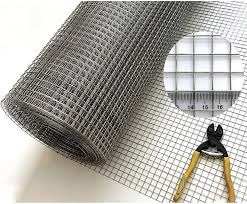11 月 . 04, 2024 06:04 Back to list
common nail
The Common Nail A Simple yet Essential Fastener
When we think about the tools and materials that have shaped our built environment, the humble nail often does not receive the recognition it deserves. Among the myriad types of fasteners available today, the common nail holds a special place in the hearts of craftsmen, builders, and DIY enthusiasts alike. This versatile tool has stood the test of time, proving itself indispensable in various applications.
History and Evolution
The use of nails dates back thousands of years, with archaeological evidence indicating that such fasteners have been used since ancient Egypt. Originally crafted from materials like bronze and iron, nails evolved over time as metallurgy advanced. The common nail as we know it today became widely produced during the Industrial Revolution, thanks to innovations in machinery that allowed for mass production. This shift not only lowered costs but also made nails more accessible to builders of all kinds.
Design and Composition
A standard common nail is typically made of steel, which provides the strength and durability necessary for construction projects. Its design features a smooth, cylindrical shaft with a flat head, allowing it to be easily driven into wood and other materials using a hammer. Common nails come in various lengths and gauges to suit different applications, from framing homes to simple woodworking projects. The gauge indicates the thickness of the nail; a higher gauge means a thinner nail, while a lower gauge indicates a thicker one.
Applications in Construction
common nail

The versatility of common nails makes them suitable for a wide range of applications. In construction, they are chiefly used for framing, sheathing, and attaching various structural elements. Their ability to hold materials together securely while allowing for some movement makes them ideal for use in wooden structures. Common nails are also used in cabinetry and furniture making, proving that they are not just for the big projects but also small, intricate designs.
One notable feature of common nails is their ability to be easily removed. While this is often a disadvantage when compared to screws, it allows for adjustments and modifications in construction without significant damage to the materials involved. This characteristic of common nails is invaluable for both temporary structures and for experienced builders who might need to make changes during the project.
Environmental Considerations
In an era where sustainability is a crucial concern, the production and use of common nails warrant attention. Steel, being a recyclable material, allows for nails to be reused after their life cycle ends, contributing to reduced waste. Additionally, using nails instead of screws for certain tasks can sometimes be more efficient, saving time and energy in the building process.
Conclusion
The common nail, while often overlooked, is a key component in the world of construction and craftsmanship. Its historical significance, innovative design, and versatile applications cement its status as an essential fastener in modern building practices. Whether you are a seasoned contractor or a weekend DIYer, having a reliable supply of common nails can make all the difference. As we look to the future of construction, the common nail will undoubtedly continue to play an important role, reminding us that sometimes the simplest tools are the most powerful.
-
Secure Your Roof with Quality Roofing Nails
NewsNov.04,2024
-
Secure Your Property with Quality Field Fencing
NewsNov.04,2024
-
Enhance Your Space with Quality Mesh Fencing
NewsNov.04,2024
-
Discover the Versatility of Iron Wire for Your Projects
NewsNov.04,2024
-
Discover the Versatility of Common Nails for Your Projects
NewsNov.04,2024
-
Discover Quality Hydraulic Fittings for Your Applications
NewsNov.04,2024









